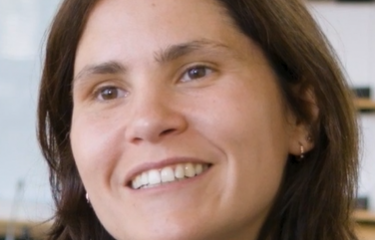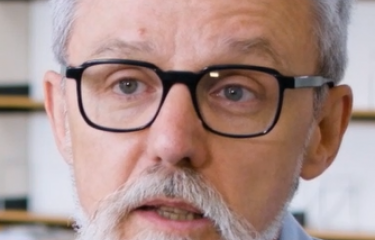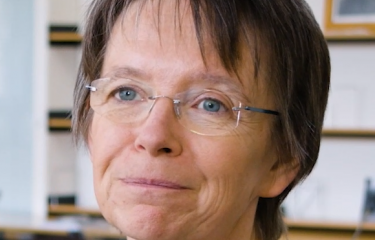A further step has just been taken in understanding the mechanisms that allow some individuals to control HIV infection without treatment.
A research team led by Dr. Asier Sáez-Cirión (Institut Pasteur) and Dr. Bruno Vaslin (IDMIT[1], CEA-Inserm-Université Paris Saclay) observed for the first time that the antiviral activity of CD8+ T cells of "controller" macaques infected with the simian immunodeficiency virus (equivalent to HIV for non-human primates) was initially limited in the first two weeks of infection, but increased thereafter. One explanation for this phenomenon would be the early development of highly effective CD8+ memory T cells.
This study, supported by ANRS, the MSDAvenir Foundation and the ANR Investments for the Future program, was published in the journal Cell Reports on September 22, 2020.
HIV controllers are rare individuals identified as being able to control their infection without treatment. Previous studies have highlighted the central role played by CD8+ T cells in this phenomenon, in which they recognize and rapidly eliminate HIV-infected cells. During the chronic phase of the infection, it has been observed that controllers possess CD8+ T cells whose molecular program differs from that of non-controllers.
To determine what happens during the acute phase of the infection, the Institut Pasteur team and their colleagues from IDMIT, the Universities of Paris and Toulouse Paul Sabatier, Cardiff University School of Medicine and the Paris hospitals group AP-HP used a specific model of macaques infected with the simian immunodeficiency virus (SIV), with some becoming natural controllers and others progressing to AIDS. For the first time, the researchers were able to follow, from the very first days after infection, the events that led (or did not lead) to controlling the virus and observed the differences that characterized the CD8+ T cells of the controller animals.
While SIV-specific CD8+ T cells were produced in large quantities within 15 days of infection in all of the subjects, their ability to eliminate SIV-infected CD4 T cells remained limited. However, the researchers were able to observe that the antiviral activity of the CD8+ T cells increased gradually over the following weeks, but only in certain individuals – those who would later become the controllers. Their CD8+ T cells were able to gradually reduce viremia and establish lasting control of the SIV infection without antiretroviral treatment. The researchers were able to determine that it took two to three months for maturation of the CD8+ T cell response to occur and for control of the infection to be established in the controller individuals.
However, it is in the two first weeks following infection that the ability to control or not control SIV is thought to be determined. Although the CD8+ T cells of the non-controllers appeared to generate an immediate response, they were exhausted by the continued presence of SIV. However, the controller animals developed CD8+ memory T cells capable of regenerating new cells in the face of repeated SIV stimulation. The researchers hypothesize that this difference may be due to a relative protection of the lymph nodes, which in the controllers had fewer infected cells in the early days of infection.
These observations supplement and consolidate the previous work of the same research team. "Our findings show that differences between the CD8+ T cells of the controllers and non-controllers are established at a very early stage in acute infection. We introduce for the first time the concept of maturation of the antiviral potential of the CD8+ T cell response during infection with HIV/AIDS," reports Dr. Caroline Passaes, research engineer at the HIV, Inflammation and Persistence Unit at Institut Pasteur and first author of the study. This discovery opens up important prospects for the development of new vaccine or immunotherapy approaches to achieve remission of HIV infection.
[1] IDMIT (Infectious Diseases Models for Innovative Therapies) is a joint research unit between the CEA, Université Paris-Saclay, Inserm, Institut Pasteur, ANRS and OncoDesign, specialized in infectious diseases.
Source
Optimal Maturation of the SIV-Specific CD8+ T Cell Response after Primary Infection Is Associated with Natural Control of SIV: ANRS SIC Study, Cell Reports, September 22, 2020
Caroline Passaes1,2, Antoine Millet3, Vincent Madelain4, Valérie Monceaux1, Annie David1, Pierre Versmisse1, Naya Sylla2, Emma Gostick5, Sian Llewellyn-Lacey5, David A. Price5, Antoine Blancher6,7, Nathalie Dereuddre-Bosquet2, Delphine Desjardins2, Gianfranco Pancino1, Roger Le Grand2, Olivier Lambotte2,8, Michaela Müller-Trutwin1, Christine Rouzioux3,9, Jérémie Guedj4, Véronique Avettand-Fenoel3,9, Bruno Vaslin2 and Asier Sáez-Cirión1
1 Institut Pasteur, HIV Inflammation and Persistence, Paris, France
2 CEA-Université Paris-Saclay, INSERM UMR 1184, Immunology of Viral Infections and Autoimmune Diseases, IDMIT Department, IBFJ, Fontenay-aux-Roses, France
3 Université Paris-Descartes, Sorbonne Paris Cité, Faculté de Médecine, EA 7327 Paris, France
4 Université Paris-Diderot, IAME, INSERM UMR 1137, Sorbonne Paris Cité, Paris, France
5 Cardiff University School of Medicine, Division of Infection and Immunity, Cardiff, UK
6 Université Paul Sabatier, Laboratoire d’Immunogénétique Moléculaire, EA 3034 Toulouse, France
7 CHU de Toulouse, Laboratoire d’Immunologie, Toulouse, France
8 Assistance Publique-Hôpitaux de Paris, Service de Médecine Interne et Immunologie Clinique, Groupe Hospitalier Université Paris-Saclay, Hôpital Bicêtre, Le Kremlin-Bicêtre, France
9 Assistance Publique-Hôpitaux de Paris, Service de Microbiologie Clinique, Hôpital Necker-Enfants Malades, Paris, France
https://doi.org/10.1016/j.celrep.2020.108174





